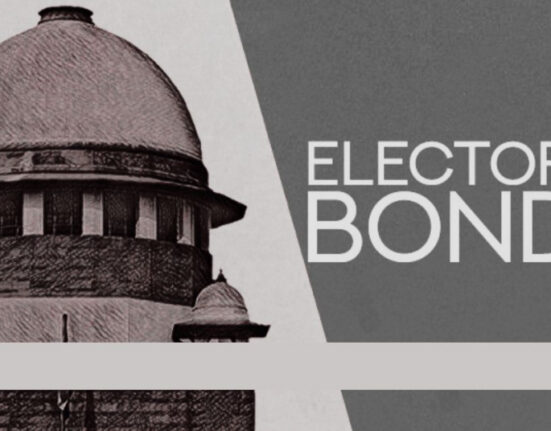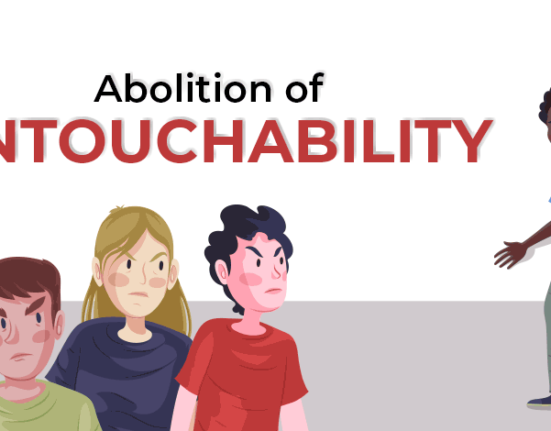Drishti Suji, a 4th-year student from Vivekananda Institute of Professional Studies (VIPS) has written this Article “Educational and Cultural Rights under Indian Constitution”.
INTRODUCTION
The fundamental rights that are guaranteed to all citizens under the Indian Constitution are basic human rights. They are implemented without discrimination based on race, religion, gender, etc. Importantly, under specific circumstances, fundamental rights are upheld by the courts.
They are referred to as essential rights for two reasons:
- The Constitution guarantees them by enshrining them.
- They can be judged (enforceable by courts).
The Indian Constitution lists six fundamental rights:
- Right to Equality (Article 14-18)
- Right to Freedom (Article 19-22)
- Right against Exploitation (Article 23-24)
- Right to Freedom of Religion (Article 25-28)
- Cultural and Educational Rights (Article 29-30)
- Right to Constitutional Remedies (Article 32)
This article will throw light upon the educational and cultural rights enshrined under the constitution within articles 29 and 30. By helping them to maintain their history and culture, these rights defend the rights of linguistic, cultural, and religious minorities. To determine whether a community is a minority or not, courts look to other considerations including economic welfare[1]. Moreover, The purpose of educational rights is to give equal access to education for all people without discrimination.
These fundamental rights aim to safeguard both the right to an education and the culture of India’s minority populations. Indian society is composite and multicultural, and one of its advantages is its diversity. The Constitution offers outlets for all groups, especially underprivileged ones, to safeguard, preserve, and propagate their culture. It guarantees these rights to minorities to preserve the diversity of this nation.
Article 29 as laid down under the Indian Constitution
“Protection of interests of minorities. —
- Any section of the citizens residing in the territory of India or any part thereof having a distinct language, script, or culture of its own shall have the right to conserve the same.
- No citizen shall be denied admission into any educational institution maintained by the State or receiving aid out of State funds on grounds only of religion, race, caste, language, or any of them”.[2]
Article 30 as laid down under the Indian Constitution
“Right of minorities to establish and administer educational institutions. —
- All minorities, whether based on religion or language, shall have the right to establish and administer educational institutions of their choice.
(1A) In making any law providing for the compulsory acquisition of any property of an educational institution established and administered by a minority, referred to in clause (1), the State shall ensure that the amount fixed by or determined under such law for the acquisition of such property is such as would not restrict or abrogate the right guaranteed under that clause.
- The State shall not, in granting aid to educational institutions, discriminate against any educational institution on the ground that it is under the management of a minority, whether based on religion or language”.[3]
ARTICLE 29
The protection of the cultures of India’s minority groups is the primary objective of Article 29 of the Indian Constitution. India’s great diversity serves as both a strength and a problem for the nation. India is complex, which leads to the need for Article 29 of the Constitution. These rights are guaranteed to India’s minority groups by the Constitution. Moreover, This aids in the preservation of all of India’s disadvantaged communities. The people are also driven to defend, advance, and maintain their culture.
1975 saw the promulgation of Article 29 on April 26. Article 29 is found in Chapter 3’s “Fundamental Rights” section, which is covered by the Department of Personnel and Administrative Reforms.
Only individuals who are Indian citizens and live on Indian soil are granted the right. Since there is such a wide variety of cultures and traditions in India, Article 29 of the Indian Constitution grants every citizen the freedom to preserve their culture and any connected outlets. Article 29 of the Indian Constitution supports minorities who worry about losing their cultural identity.
ARTICLE 30
Minorities’ right to form and run educational institutions is stated in Article 30 of the Indian Constitution. It states: “All minorities must have the freedom to create and run educational institutions of their choice, whether based on religion or language”. The provisions in Article 30 protect numerous rights of the nation’s minority community while also keeping the equality principle in mind.
The Constituent Assembly deliberated on the importance of providing primary education in one’s mother tongue. However, An amendment was proposed by one Assembly member to limit the application of this item to linguistic minorities. He maintained that minorities should not be recognized in a secular state based on their faith.
A different Assembly member made a proposal to uphold the fundamental right of linguistic minorities to primary education in their own language and writing system. The situation of minority languages worried him. The ideas were rejected by the Constituent Assembly.
Article 30 enables minority populations in India to start and run educational institutions. It ensures that they have the same access to government assistance as other educational institutions. They are entitled to equality and freedom from prejudice. In accordance with Article 30, the price of any compulsory acquisition of land where a minority educational institution is located must be decided in a way that does not restrict the minority community’s right to an education. Asserting the value of the Right to Equality provided to all under Article 14 of the Indian Constitution, Article 30 aids minorities’ access to education in India. Only minorities in India are guaranteed the privilege granted by Article 30, not all citizens equally. The goal of doing this is to safeguard the interests of India’s minorities. Also, they have the right under Article 30 to receive instruction in these educational institutions in their native tongue.
Case Laws
The Indian Supreme Court detailed the rationale behind the provisions of Article 30 in a judgment in Secretary of Malankara Syrian Catholic College v. T. Jose and Ors[4]. The Apex Court noted that the purpose of the special rights granted to minorities in India is to ensure that they have the same rights as the majority community in that country. The Court also stressed that giving minorities additional rights does not provide them an edge over the majority population because it instead creates a fair playing field. They are also subject to the same laws and regulations as the rest of the country.
In The Ahmedabad St. Xaviers College v. State of Gujarat and Anr. (1974)[5], the Supreme Court gave thought to the intent and spirit of Article 30. According to the Court, the moral responsibility of the nation toward minority communities is the driving force behind Article 30. To make sure that the nation’s linguistic and religious minorities do not face obstacles to creating, running, and providing education in their preferred fields. Furthermore, They are afforded the utmost respect and independence to raise their children in accordance with the morals and principles of their community and mold them into productive members of society.
CASE LAWS UNDER ARTICLES 29 AND 30
S.P. Mittal v. Union of India, AIR 1983 SC 1
FACTS
- In this instance, Sri Aurobindo was not only an excellent administrator and academician but also involved in political action. Subsequently, he abandoned everything to live a life of meditation in Pondicherry, Tamil Nadu.
- There he met Madam M. Alfassa, later recognized as Mother, who would go on to become his disciple. To spread and put into practice Sri Aurobindo’s principles and opinions, his disciples and his mother later founded The Sri Aurobindo Society.
- The Mother, the organization’s founding president, created the municipality of Auroville as a dwelling where people might gather and engage in a variety of activities. Eventually, the United Nations Educational, Scientific, and Cultural Organization (UNESCO) decided to support supplies to aid Auroville’s development.
- When the mother died away, several issues, including poor project management and financial misuse, surfaced, impeding the township’s ability to function and flourish.
- As a result, the Tamil Nadu government took management into its own hands and filed a presidential edict that subsequently became The Auroville (Emergency Provisions) Act, 1980, bearing in mind the international nature of Auroville due to the agreement with UNESCO.
ISSUE
The issue raised was whether the act was violative of Article 29 and Article 30.
DECISION
The bench concluded that the Act does not contravene Articles 29 and 30. The court determined that it did not violate Article 29 because it did not in any way restrict their rights or prevent any person from preserving their own language, script, or culture.
Additionally, in this situation, in order to qualify for protection under Article 30, one must demonstrate that they belong to a minority linguistic or religious group and that they started the organization in question. Since Auroville was built on Sri Aurobindo’s philosophy and was not a place of worship, they were not eligible for protection under these articles.
DAV College, Punjab v. State of Punjab[6]
FACTS
- In this instance, the University published a notification stating that all connected colleges must use Punjabi as their primary language of instruction.
- Minorities should have the freedom to select their preferred teaching and learning medium, according to a petition that was submitted against the university.
ISSUE
Those whose rights were being violated by the order were those who didn’t speak Punjabi. The question was whether the notification violated Articles 29 and 30 of the Indian Constitution.
DECISION
The petitioners’ arguments were accepted by the court. The connected institutes were given permission to conduct classes in the languages in which they felt most at ease.
Re Kerala Education Bill[7]
FACTS
- Regarding the Kerala Education Act 1958, the President in this case petitioned the Supreme Court pursuant to Article 143 of the Constitution.
- Out of many of his inquiries, the President questioned Sub-Article (5) of Clause 3 which said, ‘any new school or any higher class opened in any private school that did not come up to the criteria of government control would not be recognized by the Government’.
- The President inquired as to whether granting the government such authority would be in violation of Article 30 given that minority populations have the right to run and create their own institutions.
ISSUE
Minority groups have the freedom to govern, but do they have the freedom to mismanage?
DECISION
Minority groups were said to be without the authority to mismanage. The state may undoubtedly establish reasonable limitations as a prerequisite for assistance or even recognition, according to Das, C.J.
Additionally, it was stated that while the opening of educational institutions was necessary for minority communities to exercise their right under Article 30, all educational institutions are bound by Article 29(2), which prohibits discrimination against any citizen in the state or state-aided institutions at the time of admission based on race, sex, creed, or any other factor.
T.M.A. Pai Foundation v. the State of Karnataka,[8]
FACTS
The St. Stephen’s College v. University of Delhi case in this instance was first assessed by a five-judge bench, then passed to a six-judge bench, and then to a mammoth eleven-judge bench to determine the status of minority rights.
ISSUE
The questions that Kirpal, CJI, posed and which are pertinent to this topic are listed below:
- Is the establishment of educational institutions a Basic Right, and if so, under what provision?
- What is the unit to be used to determine the presence of a religious minority in connection to Article 30?
- How much can assist private minority institutions’ rights be regulated?
DECISION
- The two rights are Article 19(1)(g) i.e. the right to a profession subject to constraints of Article 19(6) and Article 26, the right “of all citizens and religious denominations to create and operate educational institutions” which are for non-minority groups. The Constitution includes provisions for minority communities in Article 29(1) and Article 30(1).
Minority communities have the freedom to choose how teachers and students are chosen, as well as the freedom to establish educational institutions. It must be impartial, open, and most crucially, merit-based. For unaided schools, the same holds true.
Yet, it is crucial that these agencies follow Article 29(2) while making admissions. They cannot discriminate against pupils based on their gender, color, or any other factor.
- According to Article 30 of the Constitution, the term “minority” refers to linguistic and religious minority communities. The state shall be used as the unit to determine whether a certain community is a minority under both Federal and State law. Unanswered was the question of what happens when a group minority in the nation becomes the majority in a particular state.
- Article 30(1) does not supersede laws or executive orders, as long as they do not change the nature of minority educational institutions. They are nevertheless subject to laws governing things like morality and health. This is true notwithstanding the way that Article 30 is written. Rules that support teachers and students and promote academic excellence continue to be in effect.
Such institutions should not receive assistance with restrictions or limitations that would undermine their management or core values. Nonetheless, it is not in violation of Article 30 provided the restrictions in question do not harm the organization’s management or character.
CONCLUSION
According to our constitution, diversity makes us stronger. As a result, they protected the minority’s right to preserve their culture. Religious and linguistic minorities are included under this provision, and minority status is not just based on religion. Groups that share a common language or religion but are outnumbered by another social group in a particular region of the nation or nationwide are considered minorities. These communities are entitled to protect and develop them.
Now, linguistic, and religious minorities can also establish their own educational institutions, thanks to these provisions. They can develop and retain their culture in this way. The government will not treat any educational institution differently while providing help to educational institutions only because it is run by a minority community.
Also Read: Right to Privacy under the Indian Constitution. Click Here!
[1] Bal Patil & Anr. v. Union of India & Ors, 2005
[2] Constitution of India
[3] Constitution of India
[4] 27 November 2006
[5] 1974 AIR 1389, 1975 SCR (1) 173
[6] 1971 AIR 1737, 1971 SCR 688
[7] AIR 1958 SC 956
[8] AIR 2003 SC 355
![]()







Leave feedback about this